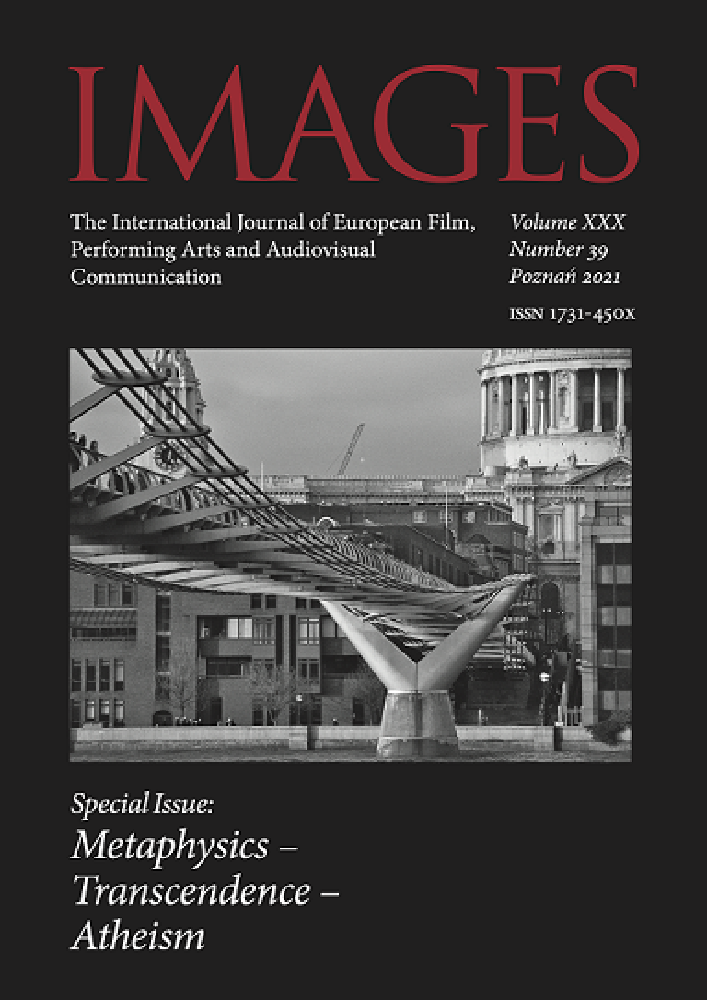Abstrakt
The reflections presented in this article are devoted to Junko Theresa Mikuriya’s book, A History of Light. The Idea of Photography. It is a unique view on the search for pre-photographic origins of photography in the field of philosophical writings ranging from Plato, through the neoplatonic philosopher Jamblich’s enquiry, to the texts by Philotheus of Batos and by an early Renaissance philosopher, Marsilio Ficino. When thinking about metaphysics present in (moving and still) images, one should not forget about the metaphysics of the image itself. The idea of photography – regardless of whether we are witnessing a fundamental change in an ontological transition from an analogue to a digital form of image recording – obliges us to discuss the “history of light”, as this is what Mikuriya does. While locating the discussed concepts in the context of the history and theory of photography, as well as the archaeology of media, the author of this essay engages in a dialogue with Mikuriya and polemically discusses many of her hypotheses. Key concepts such as chalepon, photagogia, triton genos, phôteinographeisthai are analysed in order to indicate inspiring moments in the Mikuriya’s reflections, but also a kind of interpretive abuse in the process of reading and analysing philosophical texts addressing the issues of light.
Bibliografia
Barthes R., Camera Lucida. Reflections on Photography, New York 1981
Barthes R., The Pleasure of the Text, New York 1975
Batchen G., Burning with Desire: The Conception of Photography, Cambridge, MA, – London 1999
Batchen G., Each Wild Idea. Writing, Photography, History, Cambridge, MA, – London 2002
Cadava E., Words of Light. Theses on the Photography of History, New Jersey 1997
Cubitt S., The Practice of Light. A Genealogy of Visual Technologies from Prints to Pixels, Cambridge, MA, – London 2014
Derrida J., Athens, Still Remains. The Photographs of Jean-François Bonhomme, New York 2010
Derrida J., Khôra, [in:] J. Derrida, On the Name, Stanford 1995
Dick K., Ziering Kofman A., Derrida J., Derrida: Screenplay and Essays on the Film, Manchester 2005
Didi-Huberman G., Celui qui inventa le verbe „photographier”, [in:] G. Didi-Huberman, Phasmes. Essais sur L’Apparition, Paris 1998
Digital Light, eds. S. Cubitt, D. Palmer, N. Tkacz, London 2015
Foucault M., Orders of Things. An Archaeology of the Human Science, London – New York 2002
Gernsheim H.A., The History of Photography from the Camera Obscura to the Beginning of the Modern Era, London 1969
Janouch G., Conversation with Kafka, New York 2011
Kossoy B., Hercules Florence, Pioneer of Photography in Brazil, „Image. Journal of Photography and Motion Pictures of the International Museum of Photography at George Eastman House”, 1977 vol. 20, no. 1
Ks. Henryk Paprocki: Ikona Nowosielskiego przetrwa jako żywa sztuka. Z ks. Henrykiem Paprockim rozmawiał Karol Grabias, <https://teologiapolityczna.pl/ks-prof-henryk-paprocki-ikona-nowosielskiego-przetrwa-jako-zywa-sztuka>, accessed: 4.11.2020
Media Archaeology. Approaches, Applications, and Implications, red. E. Huhtamo, J. Parikka, Berkeley – Los Angeles – London 2011
Michałowska M., Sokrates patrzy w słońce, „Przegląd Kulturoznawczy” 2019, nr 3 (41)
Mikuriya J.T., A History of Light. The Idea of Photography, London 2016
Newhall B., The History of Photography from 1839 to the Present Day, New York 1949
Pettersen D., The Art of Reconciliation. Photography and the Conception of Dialectics in Benjamin, Hegel, and Derrida, London 2013
Photographic Theory, ed. J. Elkins, New York – London 2007
Pyke S., Philosophers, London 1995
Pyke S., Philosophers, New York 2011
Silverman K., The Miracle of Analogy or The History of Photography, Part 1, Stanford 2015
Tagg J., The Burden of Representation. Essays on Photographies and Histories, New York 1988
Tagg J., The Disciplinary Frame. Photographic Truths and the Capture of Meaning, Minneapolis – London 2009
Taminiaux P., The Paradox of Photography, Amsterdam – New York 2009
The Philokalia. The Complete Text Compiled by St Nikodimos of the Holy Mountain in St Makarios of Corinthc. vol. 3, trance. and ed. by G.E.H. Palmer, P. Sherrard, K. Ware, London 1984
Zielinski S., Deep Time of the Media. Toward an Archaeology of Hearing and Seeing by Technical Media, Cambridge, MA, – London 2006
Licencja
Prawa autorskie (c) 2021 Piotr Zawojski

Utwór dostępny jest na licencji Creative Commons Uznanie autorstwa 4.0 Międzynarodowe.

